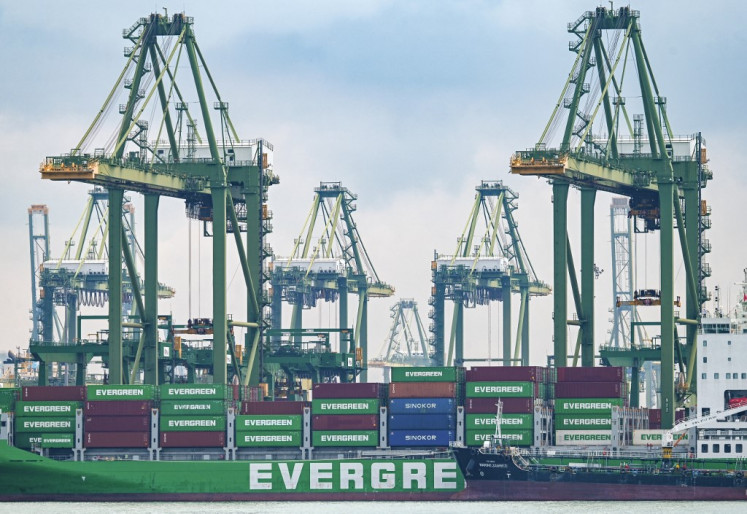Popular Reads
Top Results
Can't find what you're looking for?
View all search resultsPopular Reads
Top Results
Can't find what you're looking for?
View all search resultsAgus pressures PLN to quell soaring subsidies
Finance Minister Agus Martowardojo has urged state electric company PT PLN to speedily complete its 10,000 megawatt (MW) coal-based power plant projects for the sake of fuel-subsidy savings
Change text size
Gift Premium Articles
to Anyone
F
inance Minister Agus Martowardojo has urged state electric company PT PLN to speedily complete its 10,000 megawatt (MW) coal-based power plant projects for the sake of fuel-subsidy savings.
According to Agus, PLN’s dependency on fuel has made it difficult to save fuel subsidies and that if the company could convert one of its fuel-based power stations’ energy sources to coal or gas, the state could save trillions of rupiah.
“Some phases of the 10,000 MW project are late in being completed and, as long as this goes on, the power plants will use fuel as their energy source,” Agus told reporters at the Finance Ministry in Jakarta on Thursday.
“If only one power plant converts its energy source from fuel to coal then, on average, we can save at least Rp 6 trillion of fuel subsidies annually,” he added.
As of now, PLN uses subsidized fuel as the energy source for most of its power plants.
The government has also allocated Rp 64.9 trillion for electricity subsidies in the 2012 revised state budget (APBN-P).
The government provides an electricity subsidy because PLN’s current production costs stand at Rp 1,100 (12 US cents) per kilowatt-hour (kWh), while the standard electricity tariff is only Rp 729 per kWh.
Originally, the government wanted to allocate Rp 93 trillion for the electricity subsidy but the House of Representatives rejected the idea and only sanctioned Rp 64.9 trillion as legislators deemed that PLN had been inefficient in producing electricity. Due to the legislators’ rejection, the government then had to establish around Rp 23 trillion of energy fiscal risk.
Agus said most of the fiscal risk could be allocated to PLN if its operations and subsidized-fuel usage remained inefficient.
The Supreme Audit Agency (BPK) has also revealed that PLN spent too much subsidized fuel in its operations.
The BPK in its audit report said the state had lost Rp 17.9 trillion and Rp 19.7 trillion in 2009 and 2010, respectively, due to PLN’s inefficiency in using subsidized fuel.
Meanwhile, PLN maintained the current budget allocation for the company was not enough for it to fund both its operations and to pay off its debts.
“Using the current budget, we can fund our operating costs until the end of the year but we can only pay one-third of our debts,” PLN president director Nur Pamudji said at the House on Thursday.
“Therefore, we need more funding to pay our debts,” he added.
Pamudji added that the company might propose that the Finance Ministry disburse the fiscal energy risk budget to cover PLN’s debts.
“Funds for the energy-risk budget belong to the government and, therefore, we have to apply to the Finance Ministry with sufficient reasoning to obtain disbursement for our debt payment,” he said.
Pamudji said that PLN would do its best to pay its debts before applying to the government for the energy risk-fund disbursement.
PLN’s total debt in 2012 will be around Rp 18 trillion, according to a recent statement by Pamudji.










